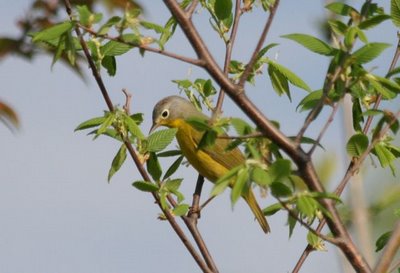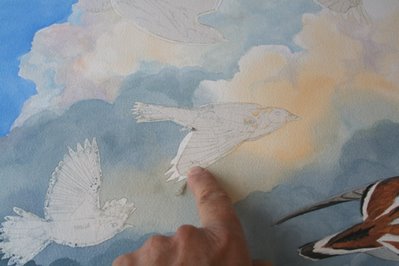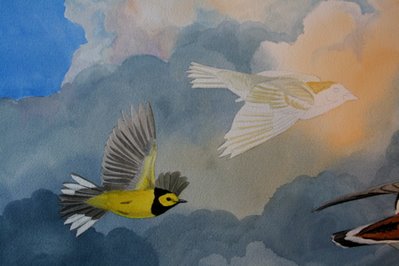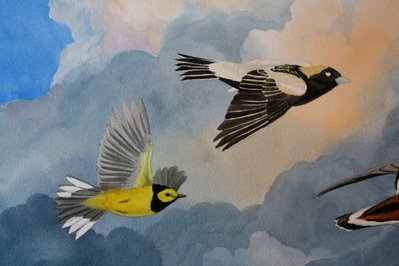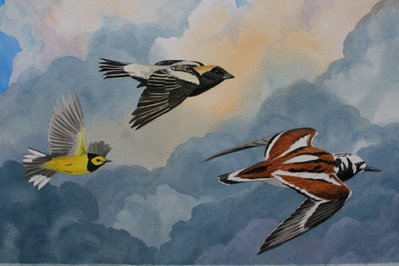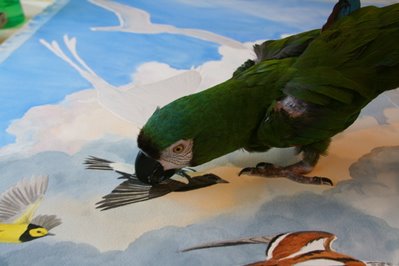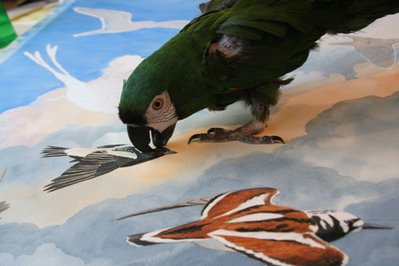All This Useless Beauty
It's all happening too fast, going away too fast. The blackpoll warblers are in; they're the latest migrants. I'm starting to see female warblers coming through, another sign that migration is winding down (males migrate first, so they can set up their territories before the females arrive). It's been a beautiful spring, what we've been able to see of it through the constant travel and the pouring rain. Everything is lush beyond belief; my gardens are burgeoning. I planted some zinnia seeds today, looking forward to July blossoms for the butterflies and hummingbirds. Everything grows when it rains all the time. I'll have mesclun and arugula (rocket!) tonight.
I'm off again this weekend to give a Saturday talk and lead a Sunday morning field trip at Beaver Creek Wetlands near Dayton, Ohio. Praying that whatever digital projector they come up with will talk to my Mac laptop. Hoping it doesn't rain for the field trip, but figuring it will. Why break precedent with the rest of the spring? Nursing a whopper of a sinus infection, sore throat and all, trying to get my voice in shape to record some commentaries tomorrow before I leave. I sound like Timmy at the bottom of the well. Schlepping kids to sports events 30 miles away. Whoops, gotta go to town on the way and buy red tube socks and black pants for the uniform, gotta buy a third ball glove for Liam, who has a knack for leaving them wherever he happens to be. Hope whoever found them is enjoying them. Cleaning house, again. I wouldn't mind it so much if I didn't have to do it every week, if it would just keep for a bit longer. How does a boy not notice he has a Driscoll strawberry stuck to the sole of his shoe? They're big.
All right. Enough about doing too much. We all do too much. Outside, it all goes on without us, all this useless beauty*, and we can go out and look at it, or we can keep running on the gerbil wheel. Outside, the hooded warbler sings his syncopated song, higher than you'd think to look.
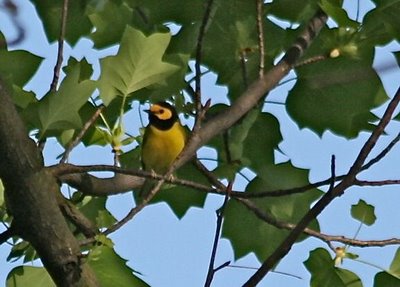 He checks his flank for a louse.
He checks his flank for a louse.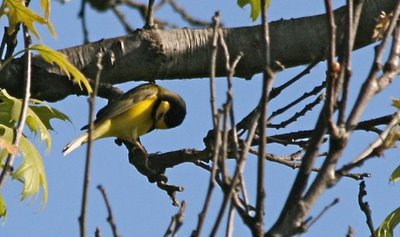 Right across the driveway, the Kentucky warbler answers with his galloping trill.
Right across the driveway, the Kentucky warbler answers with his galloping trill. 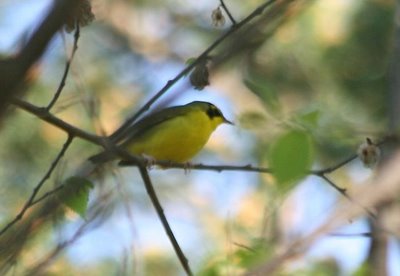 He doesn't willingly grant a glimpse, much less a good picture, but he's so worth the effort.
He doesn't willingly grant a glimpse, much less a good picture, but he's so worth the effort.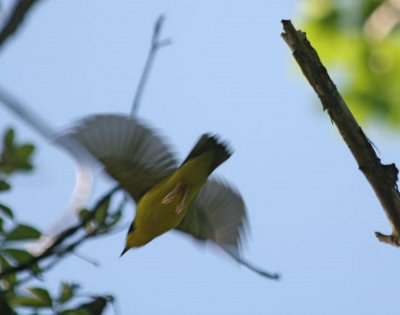 How did we get so lucky, to have both these birds breeding along our driveway?
How did we get so lucky, to have both these birds breeding along our driveway?Back on the deck, facing the day, I see an indigo bunting, a piece of lapis snagged in the willow top.
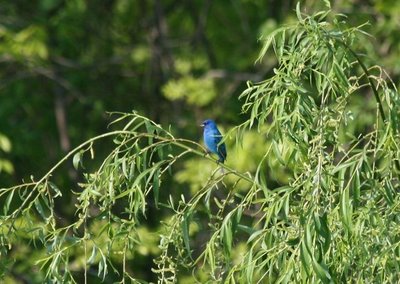 He flies to the sycamore we transplanted from the vegetable garden to the back yard. How it has grown--it's a little giant, an open-grown, symmetrical beauty, just beginning to show leopard spots on its bark.
He flies to the sycamore we transplanted from the vegetable garden to the back yard. How it has grown--it's a little giant, an open-grown, symmetrical beauty, just beginning to show leopard spots on its bark.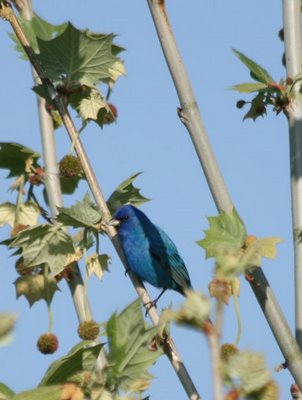 Its other choice was to be pulled up. I'm glad we transplanted it. It drinks the water that comes off the roof and pretends it's on a riverbank.
Its other choice was to be pulled up. I'm glad we transplanted it. It drinks the water that comes off the roof and pretends it's on a riverbank.Such riches we're given, bounteous treasure for free, and most of us don't even stop to collect it. I count myself in that number, most days, as my gerbil wheel of the things I should do turns.
A Nashville warbler finds caterpillar after caterpillar in a young cherry.
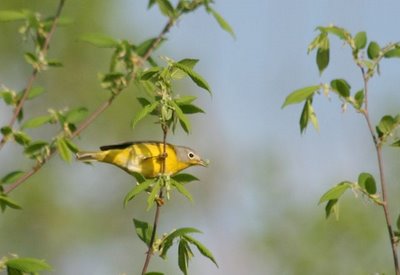
He shows me his ruddy crown
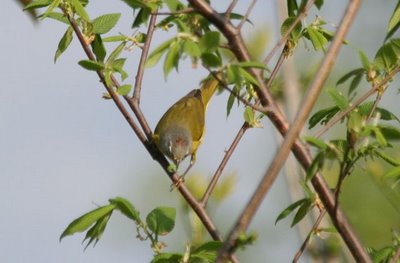
and strikes a pose that pleases.
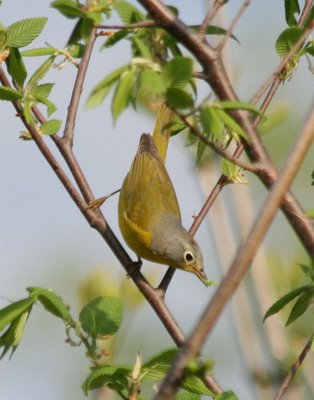 Thank you, warblers.
Thank you, warblers.Try to catch the last salvo of spring migration, wherever you may be. In the far North, it's just getting going. In the South, birds are already fledging young, the migrants long gone to their breeding grounds. It all goes on around us, and it's good to gather it in, like a flower that will soon be spent.
*thanks to Elvis Costello for that album title
Labels: hooded warbler, indigo bunting, Kentucky warbler, Nashville warbler

